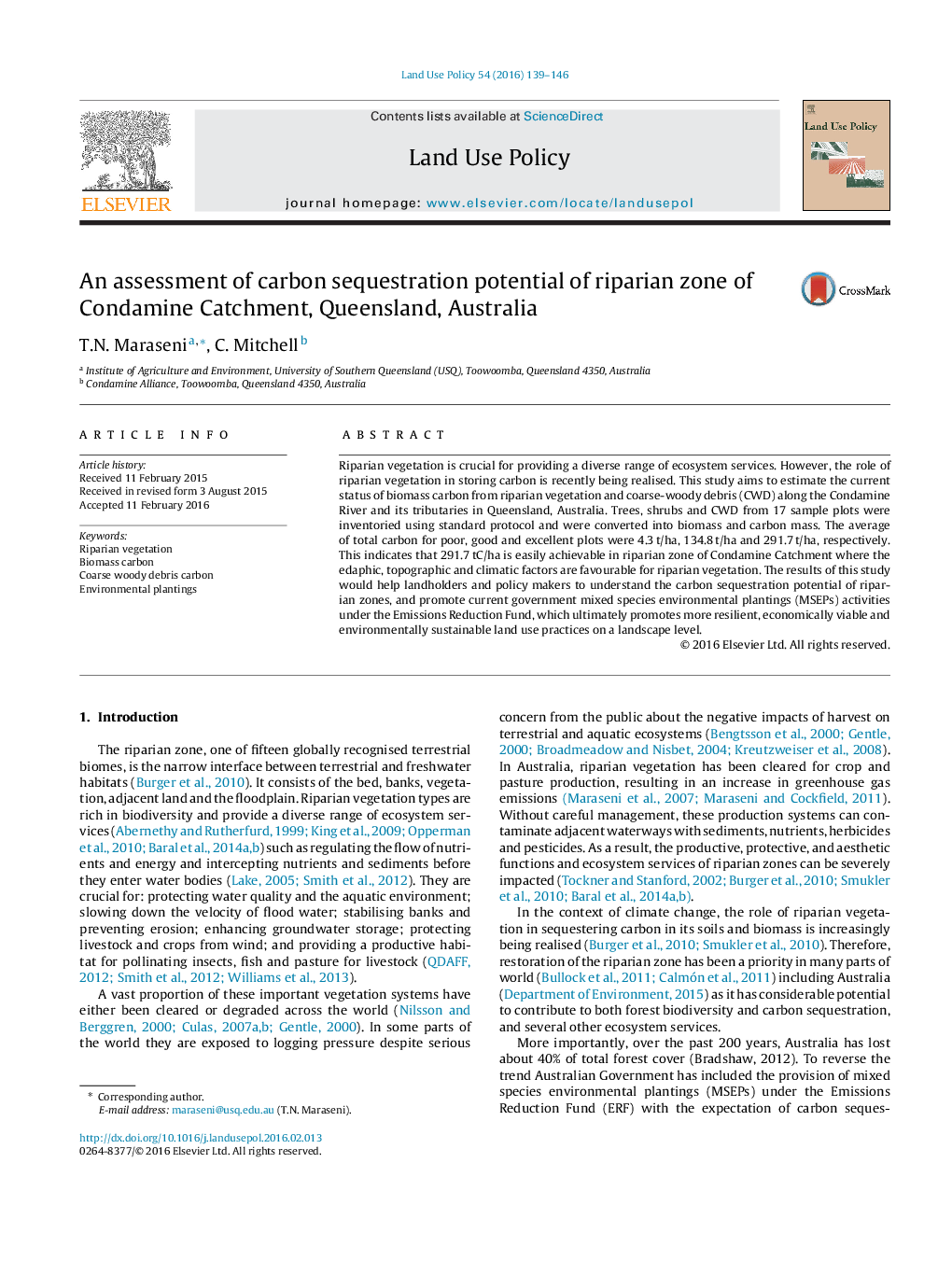| Article ID | Journal | Published Year | Pages | File Type |
|---|---|---|---|---|
| 6547311 | Land Use Policy | 2016 | 8 Pages |
Abstract
Riparian vegetation is crucial for providing a diverse range of ecosystem services. However, the role of riparian vegetation in storing carbon is recently being realised. This study aims to estimate the current status of biomass carbon from riparian vegetation and coarse-woody debris (CWD) along the Condamine River and its tributaries in Queensland, Australia. Trees, shrubs and CWD from 17 sample plots were inventoried using standard protocol and were converted into biomass and carbon mass. The average of total carbon for poor, good and excellent plots were 4.3Â t/ha, 134.8Â t/ha and 291.7Â t/ha, respectively. This indicates that 291.7Â tC/ha is easily achievable in riparian zone of Condamine Catchment where the edaphic, topographic and climatic factors are favourable for riparian vegetation. The results of this study would help landholders and policy makers to understand the carbon sequestration potential of riparian zones, and promote current government mixed species environmental plantings (MSEPs) activities under the Emissions Reduction Fund, which ultimately promotes more resilient, economically viable and environmentally sustainable land use practices on a landscape level.
Related Topics
Life Sciences
Agricultural and Biological Sciences
Forestry
Authors
T.N. Maraseni, C. Mitchell,
